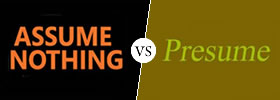Difference between Crystal and Mineral
Key Difference: Crystals are pure substances whose atoms, molecules, or ions are arranged in an ordered pattern, where they extend in all three spatial dimensions. Minerals are homogenous solids that have regular structures and are found in rocks, ore and mineral deposits in the earth’s crust.
The Earth’s crust is made up of hardened substances that are known as rocks. These rocks can be furthered divided into minerals and non-minerals. There are more than 4,000 known minerals that have been discovered on the earth’s surface. These rocks, crystals and minerals are created due to heat and other reactions that cause different substances to meld together forming certain specific types of minerals and rocks. Minerals are important for the survival of living organisms and are also known for their economic values. Since crystal is a type of structure, minerals can be found in the form of crystals or non-crystals.
 Crystals are pure substances whose atoms, molecules, or ions are arranged in an ordered pattern, where they extend in all three spatial dimensions. Crystals most commonly occur naturally on the earth, though the process of crystal formation via mechanisms of crystal growth is called crystallization or solidification. Not all crystals need to be in solid formation, where water freezing also begins with small ice crystals that grow. The study of crystals is known as crystallography. Crystal symmetry requires that the unit cells stack perfectly with no gaps. Crystals can be categorized according to their physical and chemical properties.
Crystals are pure substances whose atoms, molecules, or ions are arranged in an ordered pattern, where they extend in all three spatial dimensions. Crystals most commonly occur naturally on the earth, though the process of crystal formation via mechanisms of crystal growth is called crystallization or solidification. Not all crystals need to be in solid formation, where water freezing also begins with small ice crystals that grow. The study of crystals is known as crystallography. Crystal symmetry requires that the unit cells stack perfectly with no gaps. Crystals can be categorized according to their physical and chemical properties.
Crystals are classified as Hexagonal, cubic, orthorhombic, tetragonal, rhombohedral, and monoclinic shapes. Crystals are also believed to have healing properties and are used in various relaxation techniques. Crystals are light in color and are mostly translucent. Some clear crystals have the properties of reflecting light into different colors. Depending on the structure and rarity of the crystals they can range in prices. Salt, sugar and snowflakes are the most common types of crystals that are encountered. Though ideal crystals are supposed to have every atom in a perfect, exactly repeating pattern, in reality most crystals have crystallographic defects, where the atoms are not in a perfect pattern. These defects change the properties and structure of the crystals.

Minerals are homogenous solids that have regular structures and are found in rocks, ore and mineral deposits in the earth’s crust. Minerals occur naturally and are formed through various geological processes. Minerals are solid and stable at room temperature, representable by a chemical formula, usually abiogenic, and have an ordered atomic structure. By definition minerals should be naturally occurring, stable at room temperature, represented by a chemical formula, abiogenic and have an ordered atomic arrangement, though the last two characteristics are highly debated by scientists. The study of minerals is known as mineralogy.
Minerals can be divided in two categories; silicates and non-silicates. Silicate minerals are substances that have the base of unit of a silicate mineral is the [SiO4]4- tetrahedron. Non-silicate minerals are further divided into several other classes by their dominant chemistry, which included native elements, sulfides, halides, oxides and hydroxides, carbonates and nitrates, borates, sulfates, phosphates, and organic compounds. Non-silicate minerals are rarer compared to the silicate ones. A large number of minerals can be distinguished by characteristics such as crystal structure and habit, hardness, luster, diaphaneity, color, streak, tenacity, cleavage, fracture, parting, and specific gravity. The hardness of a mineral is measured on a scale of 1-10 using a Mohs scale, where diamonds rate as 10, while talc rate as 1. Minerals are used most commonly in day to day lives and are also a significant for a country’s economy. Natural resources such as oil and petroleum are also certain types of minerals.
|
|
Crystals |
Mineral |
|
Definition |
A crystal is a solid material whose constituent atoms, molecules, or ions are arranged in an ordered pattern extending in all three spatial dimensions. |
Minerals are substances that are naturally occurring, stable at room temperature, represented by a chemical formula, usually abiogenic and ordered atomic arrangement |
|
Composition |
Crystals are solids that have atoms, ions and molecules fixed in a regular order, which extend in three dimensions |
Have a definite chemical composition; minerals are inorganic compounds. |
|
Characteristics |
Shape, atom composition, bonds and defects |
Structure and habit, hardness, luster, diaphaneity, color, streak, tenacity, cleavage, fracture, parting, and specific gravity |
|
Classification |
Hexagonal, cubic, orthorhombic, tetragonal, rhombohedral, and monoclinic |
Silicates and non-silicates |
|
Study |
Crystallography |
Mineralogy |
|
Color |
Light reflections through the crystal |
Comes in various colors depending on composition |
|
Price |
Less expensive |
Price differs depending on rarity of the mineral |
|
Uses |
Various uses such as healing, jewelry, dishes, show pieces, vases, etc. |
Bodily functions, help in bone and tooth formation, blood coagulation, muscle contraction |
|
Examples |
Snow, amethyst, quartz, salt, diamond |
Gold, silver, fluoride etc. |
Image Courtesy: api.ning.com, kgs.ku.edu









Add new comment